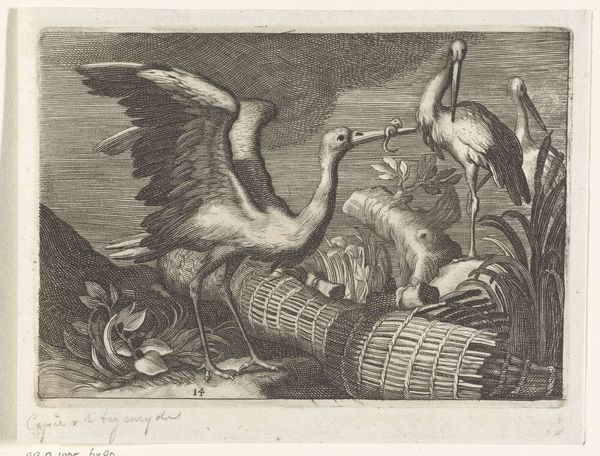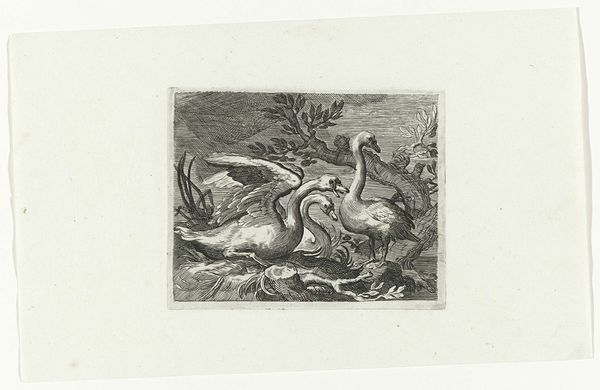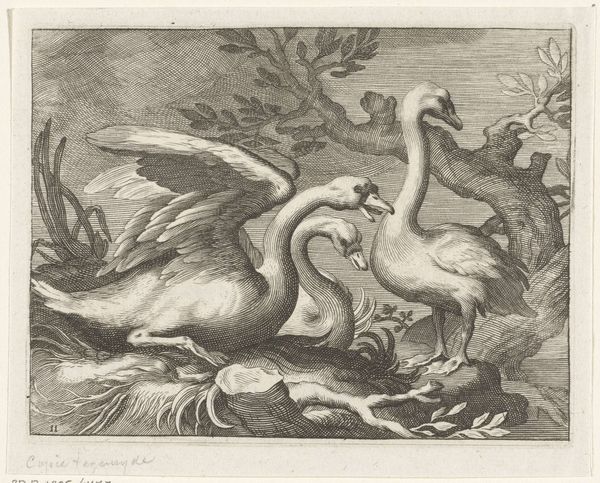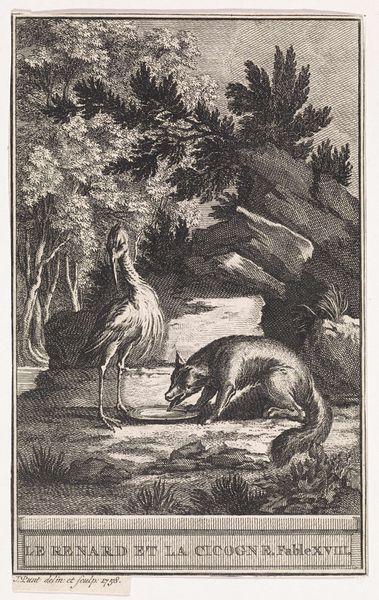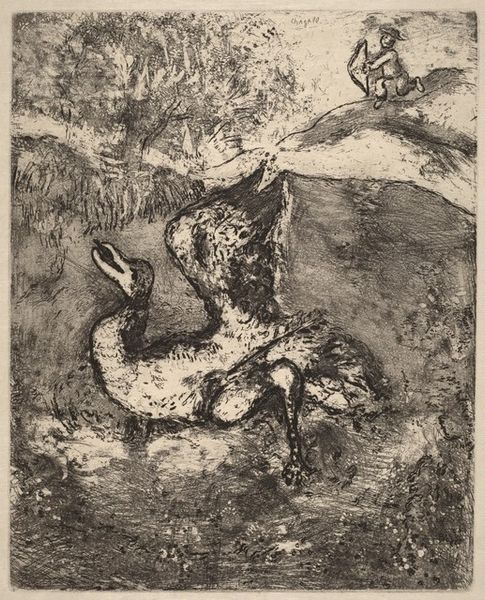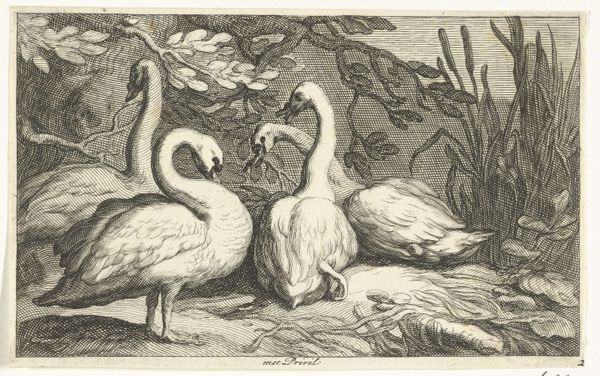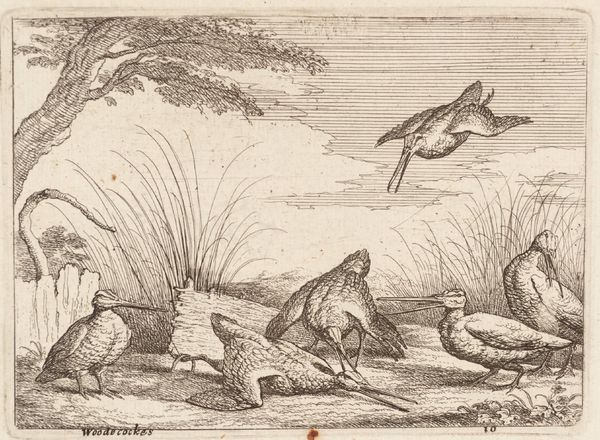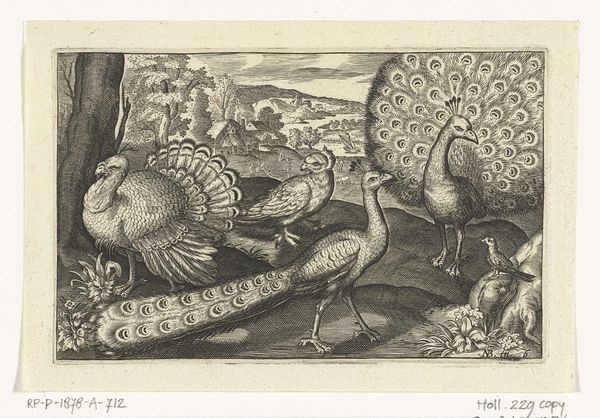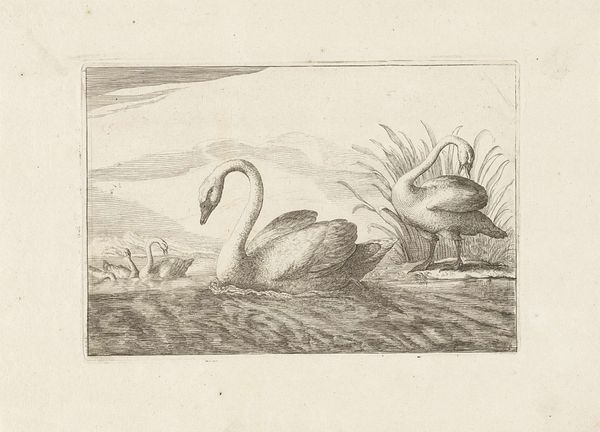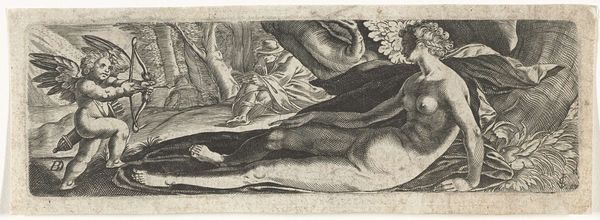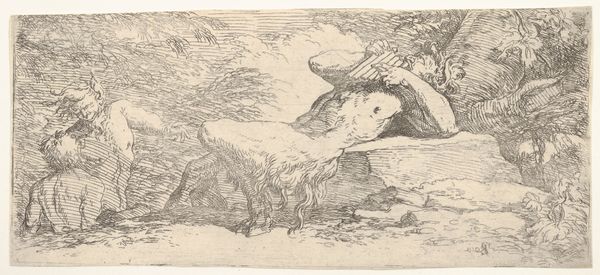
Dimensions: height 98 mm, width 155 mm
Copyright: Rijks Museum: Open Domain
Editor: Frederick Bloemaert’s “Two Swans,” made after 1635 and currently residing in the Rijksmuseum, is a study in contrasts. The delicate swans are rendered with a sharp, almost unforgiving line. What deeper resonances do you find in this simple, yet striking, image? Curator: Bloemaert’s choice of swans is far from simple; it’s steeped in symbolic weight. Swans have long represented grace, beauty, and purity in Western art. Their pairing often evokes fidelity and love, particularly within marriage. Notice the one tending to the eggs, wings spread, while the other observes. Doesn’t it suggest a watchful devotion? Editor: It does. So, are you saying Bloemaert is drawing on these traditional associations? Is he commenting on the ideals of marriage or family? Curator: Perhaps not a direct commentary, but rather an invocation of those values. The natural world, in this period, often served as a mirror to human society. Ask yourself: Why choose swans specifically? Why emphasize the nest, the eggs – symbols of new life and continuity? These choices are deliberate. Consider also the gnarled tree trunk against the pristine birds. Editor: Yes, the stark contrast! It’s fascinating how nature embodies fragility and endurance all at once. Curator: Precisely. And that’s the emotional and intellectual work Bloemaert invites us to engage in: exploring those enduring, sometimes conflicting, ideas reflected in this vignette of nature. Editor: I see it now – it’s more than just a picture of swans. The swans represent enduring concepts about relationships. Curator: Yes, images are never just images; they’re carriers of cultural memory. It enriches my viewing of this lovely scene.
Comments
No comments
Be the first to comment and join the conversation on the ultimate creative platform.
